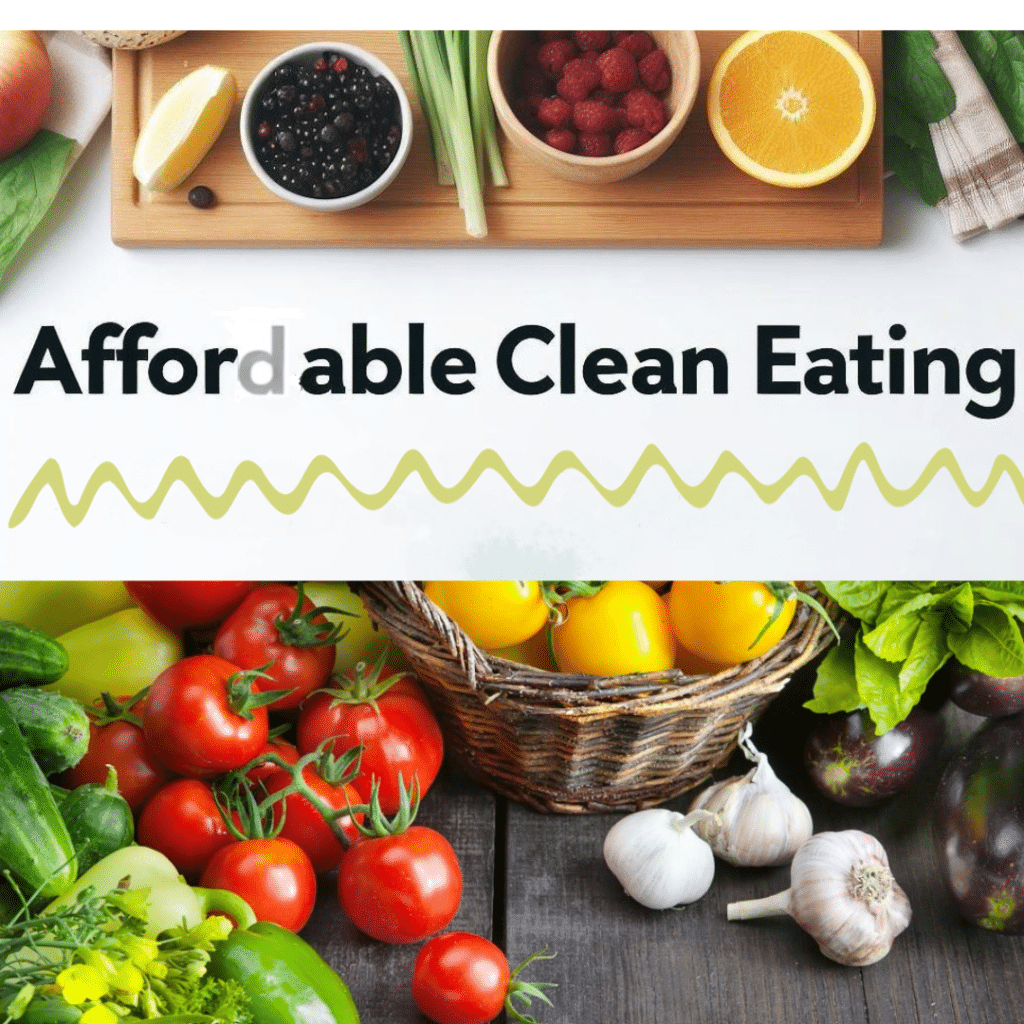In the quest for a healthier lifestyle, the common misconception is that clean eating is expensive. However, with strategic meal planning and budget-friendly nutrition, achieving nutritious, delicious meals on a budget is not only possible but also simple. Let’s explore low-cost healthy recipes, budget-friendly nutrition tips, and a practical 14-day meal plan that won’t drain your wallet. I am testing affordable clean eating myself as I am obsessed with nutritious food ideas, so this post is my own reflection on this subject.
Table of Contents
Understanding the Importance of Meal Planning and Budgeting
Meal planning isn’t just about organisation; it’s a conscious decision that impacts both your health and finances positively. By mapping out your meals in advance, you eliminate impulsive, unhealthy choices, ensuring a healthier lifestyle while keeping costs in check. Budgeting complements meal planning, acting as a roadmap to guide spending for optimal nutrition within financial limits.
The Economical Approach to a Balanced, Nutritious Diet
Embarking on the journey to eating healthy can sometimes feel like an expensive mission, but it doesn’t have to be. With some clever frugal meal solutions and affordable diet choices, you can conquer this path. The inexpensive balanced meals are based on low-cost healthy recipes that do not compromise nutrition. You just need to find the right recipes and plan the meals – it’s as simple as that. I share some examples of low-cost nutritious healthy meals below.
Switching to budget-friendly nutrition requires going for various foods to ensure a balanced diet. Prioritize vegetables, fruits, whole grains, lean proteins, and legumes. All these are nutritional powerhouses often available at easily accessible prices, making thrifty diet planning simple.
To achieve optimised economic meal prepping:
- Avoid processed foods
- Plan and plan and plan your meals in advance of grocery shop & week ahead
- consider purchasing products in bulk or when they are on sale
- Choose plant-based protein sources like lentils, beans, chickpeas or edamame
- Avoid pre-chopped vegetables or prepared meals/ingredients as they cost more
- Choose less expensive animal protein (Eggs, canned fish, broths)
- Buy seasonal products and often when what’s on sale
- Skip on superfoods, looks for a ‘substitute/equivalent’
- Make your own sauces and dips and fermented foods e.g hummus, kimchi
- Print “Clean 15” and “Dirty 12” to make guided healthy choices
- Be creative with your leftovers to reduce waste or use some apps like OLIO to swap produce
- Opt for canned or frozen fruits and vegetables, which can be just as nutritious as their fresh counterparts( watch out for added sodium & sugar in canned foods)
- Use an air fryer as it’s one of the most economical food preparation appliances.
Once in a while, you can blend in some pricier ingredients into your low-budget nutrition ideas. Buying less of the expensive stuff and more of the affordable, yet nutritious food, will balance out the budget nicely.
With money-saving healthy dishes, the general rule of thumb is to cook at home often. Doing this not only saves you money on meals but gives you control over what goes into your meals. If you can’t cook start with some home-cooking kit services – most of them offer healthy food options these days!
While at it, utilize leftovers creatively to avoid wasting food and money. Consider investing in a good meal plan guideline to assist you in this journey toward cost-effective diet planning.
Aside from being friendly to your wallet, adopting such nutritional strategies can ultimately have favourable impacts on your overall physical health and well-being, proving that budget-conscious meal strategies are worth exploring.
A Glimpse into a 14-Day Thrifty Meal Plan on a Budget
Wholesome Meals Under £5 a Day
In a world of rising living costs, crafting a frugal yet delicious 14-day meal plan is not only achievable but delightful.
Leveraging affordable staple ingredients, this plan demonstrates how to create diverse, flavorful meals on a shoestring budget. Each meal, estimated to cost below £5, revolves around mostly plant-based foods, seasonal produce, and bulk-bought grains, dispelling the myth that healthy equals expensive.
Each day’s plan consists of multiple wallet-friendly wholesome meals that will provide the necessary sustenance throughout the day. Moreover, each meal has also been estimated to cost below £5. The feasibility of this plan has been derived by leaning heavily on foods that do not compromise on the quality of nutrition. I encourage you to move away from the misapprehension that ‘healthy equals expensive’ and hope to inspire you to experiment with these economically balanced nutrition ideas.
Please note, the monetary estimates of the meals may vary slightly depending on local market prices. The key takeaway here is the simple, economical meal-prepping ingredients and techniques that will guide you toward your goal of healthy eating on a tight budget.
| Day | Breakfast | Lunch | Dinner |
|---|---|---|---|
| 1 | Quinoa Porridge | Vegetable Stir Fry | Baked Sweet Potato |
| 2 | Oatmeal with Berries | Potato-Leek Soup | Buddha bowl |
| 3 | Green Salad | Grilled Chicken Salads | Lentil Soup |
| 4 | Creamy Vanilla Millet Porridge | Tofu Curry | Tomato Soup |
| 5 | Oatmeal with Berries | Canned Salmon Pasta | Potato Salad with Baked Halloumi |
| 6 | Berry fruit chia pudding | Lentil Cottage Pie | Easy Mexican Salad |
| 7 | Banana Pancakes | Shakshuka | Sweet potato hash browns with grilled chicken |
| 8 | Scrambled eggs | Greek Salad | Air-fried baked potatoes |
| 9 | Green Salad | Courgette Soup | Chickpea curry |
| 10 | Chocolate chia pudding | Zucchini Lasagna | Air-fried salmon with air-fried brussel sprouts in chili sauce |
| 11 | Poached Eggs | Spaghetti with meatballs | Taco Soup |
| 12 | Maple syrup pancakes | Chilli con-carne | Lentil Soup |
| 13 | Tiramisu chia pudding | Cottage or Sheperd’s Pie | Butternut squash and chickpea curry with coconut milk |
| 14 | Overnight Oats | Falafel with veggies and hummus | Easy cauliflower & chickpea masala |
How do I plan my meals?
- I simply look through a few of my favourite cookbooks and note what I want to eat each day for the next 7 days.
- I usually leave a note of the recipe page number on my kitchen calendar.
- I then check the content of my fridge and pantry & finally, I open each recipe’s page and note what I need to buy. This way I ensure that all I need throughout next week is bought and I save time on top-up shop visits in the week.
I also bulk buy and use Amazon Subscribe and Save as often some grocery produce is much cheaper when bought on Amazon than in our local supermarkets.

Maximizing Your Grocery Items: The Art of Ingredient Reuse
Crafting Culinary Variety on a Budget
Contrary to popular belief, maintaining variety in your meals on a budget is possible & easy. The key lies in reusing ingredients intelligently. Staples like rice, pasta, or chicken can be cooked in bulk and repurposed creatively throughout the week. Leftover veggies, marinades, or spices can transform into entirely new dishes, ensuring both taste and budget are optimally utilized.
I really like Lisa from Downshiftology and her meal prep ideas. I also like the Budget Bytes blog. Both bloggers show us how when planned appropriately, some ingredients work across numerous meals.
For example, boiled chickpeas can work as a protein-rich addition to salads, transform into a smooth hummus for a dip or sandwich spread, or to be used as a primary ingredient in a hearty chickpea curry.
Besides honing your creativity with repurposing, another money-saving strategy is to use any remaining fresh produce before it spoils.
Got leftover veggies from last night’s dinner? Toss them into an omelet or puree them into a soup. Or mix with some cooked quinoa for a healthy and fulfilling salad. The possibilities are endless!
Key staples to consider due to their versatility and long shelf life include eggs, canned beans, potatoes, and rice. Some food staples, combined with your leftover ingredients or remnant spices, can whip up a completely new dish, optimizing the yield from your previous grocery hauls while achieving healthy eating on a dime.
Consider the following chart in which we highlight some commonly used ingredients and multiple ways to use them. This table is just to give you a rough idea, feel free to experiment and come up with your own deliciously economical creations.
| Ingredient | Use 1 | Use 2 | Use 3 |
|---|---|---|---|
| Rice | Vegetable Fried Rice | Rice Salad | Rice Soup |
| Chicken | Chicken Stir Fry | Chicken Salad | Curry with chicken |
| Sweet potatoes | Buddha bowl | Mexican Salad | Baked Sweet Potato |
| Canned tomatoes | Tomato Soup | Shakshuka | Chilli con-carne |
It’s all about creativity and flexibility. Staying on the realms of a budget does not mean compromising on the quality or enjoyment of your meals. It’s about maximizing what you have, reducing food waste, and using your kitchen smartly to extract the best out of each ingredient. This way, not only are you preparing low-cost healthful cooking but also relishing the journey along the way!
Conclusion
One can definitely enjoy low-cost healthy recipes, but also maintain a wholesome diet without tearing a hole in the pocket.
Planning is key as it preserves overspending and helps stick to healthy food choices.
Money Saving Girl
It is totally possible to find recipes for inexpensive balanced meals that do not compromise on nutrition.
The 14-day thrifty meal plan highlighted the practicable budget-conscious meal examples, emphasizing that nutritious meals are possible on a budget.
Furthermore when you start optimising your grocery items, when bulk buying and re-using then healthy eating can be sustained through financially savvy decisions.
Again all this requires a few minutes of your time and careful planning only then a healthier lifestyle with wallet-friendly wholesome meals can be easily achieved.
If you are not sure how to start clean eating on a budget why not start a 14-day clean eating challenge?
Some people do Movember, Dry January, Veganuary, etc. so you can do literally whatever you set out to test especially as long as it is contributing to positive habit-building and lifestyle change for the better!
Good luck!
Affordable Meal Prep FAQs
What is budget-friendly nutrition?
Budget-friendly nutrition balances health and the economy by selecting affordable, nutritious foods and meals.
Can low-cost meals be Healthy?
Definitely. Low-cost meals can be healthy if they’re planned wisely. By choosing cost-effective whole foods and ingredients, making good use of in-season produce, and limiting processed foods, one can create balanced meals that are delicious, healthy, and economical.
How do I start with economical meal planning?
To start with economical meal planning, begin by setting a budget, planning your meals for the week, and carefully reviewing your shopping list. Always consider using ingredients that are in season, multi-task with ingredients across multiple meals, and minimize wastage to get the most out of your budget.
Can I maintain a nutritious diet on a budget?
Absolutely, maintaining a nutritious diet on a budget is feasible. The key is in smart planning, buying in bulk, using in-season produce, reducing waste, and preparing meals at home. Remember, eating healthfully does not always have to be expensive.
What is affordable clean eating?
Affordable clean eating signifies consuming foods that are unprocessed or minimally processed, making them close to their natural state. It focuses on fruits, vegetables, lean proteins, and whole grains, and avoids processed foods and sugars. The ‘affordable’ aspect ties in with buying such foods within one’s budget constraints.
 Money Saving Girl Money Saving Tips and Ideas
Money Saving Girl Money Saving Tips and Ideas


